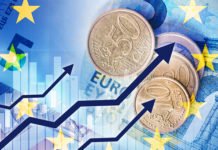Key insights from the week that was.
Domestically, it was a quiet week. May’s retail sales and private credit data reflected the resilience of Australian consumers and businesses against cost-of-living pressures and the beginning of the RBA’s tightening cycle. Nominal retail sales lifted 0.9% (vs. market f/c: 0.3%), in part capturing inflation, but more so the strength of consumer demand, particularly for non-discretionary goods. Meanwhile, annual private credit growth hit a fresh record high of 9.0%, representing a likely cycle peak centred on strength in business lending. These positive updates support our central view for Australia’s growth outlook in 2022, particularly the concentration of growth in Q2 and Q3, led primarily by the Australian consumer.
Offshore, data was decidedly mixed, with outcomes from China constructive but those for the US and Europe of concern.
Most notable this week for China was the official PMI data. As expected, the manufacturing sector returned to expansion as the latest wave of COVID-zero restrictions were lifted in a staged manner. Within the detail, production jumped 3pts to its highest level since March 2021, while new orders moved above the 50 expansion/contraction level – a rare outcome since mid-2021. Employment in the sector is responding more slowly given COVID-19 and global uncertainties; that said, at June, the employment index was only marginally below its average of the past two years.
Ahead of this release, services were generally anticipated to take longer than manufacturing to rebound. However, the PMI data suggests the composition of the recovery could be the other way round, with the services PMI storming higher in June to 54.7 – its strongest read since May 2021. Importantly, the components of the services survey point to broad-based momentum across the sub-sectors and in employment as well as strength in new business.
Assessed in conjunction with available trade and investment data, the above outcomes point to weak but positive growth in Q2 followed by a strong rebound in activity through the second half, first in production and investment then consumption. As we have continued to argue in recent months, growth near authorities’ 5.5% growth ambition is still within reach; such an outturn would be a stark contrast to the market’s current expectation.
Elsewhere in the world, the focus has remained on policy makers and the outlook for interest rates. Through the first half of the week, the ECB’s Forum on Central Banking was held in Sintra. Of particular significance for markets was the policy panel featuring ECB President Lagarde, FOMC Chair Powell and BoE Governor Bailey. Unsurprisingly, getting inflation to trend quickly back towards target was the priority of all three central bank heads. But there was also a note of caution on growing risks to the activity outlook and a desire for the fight against inflation to not stall their economies or push them into recession.
It is interesting to note that the panel speakers and the market have the greatest confidence in the US economy’s ability to weather this period of tighter financial conditions and high inflation given the strength of their labour market. However, available partial data continues to point to material and growing risks of persistently weak US growth through both 2022 and 2023.
While the third update for Q1 US GDP saw only a very small downward revision in the headline print (from -1.5% to -1.6% annnualised), consumption was revised materially lower (from +3.1% to +1.8% annualised). This change and the net effect of other revisions saw growth in domestic final demand fall from above to below trend in the quarter, the third such outcome in a row.
With the fiscal support of 2020/21 used up, the savings rate having already fallen back near pre-pandemic levels, employment growth moderating, real incomes continuing to decline and consumer confidence at record lows, further weakness in consumption and related business investment seems highly probable. Indeed, following a downside surprise for personal consumption spending in May (and April’s material revision), the Atlanta Fed nowcast for Q2 GDP is now also negative at -1.0% annualised. If this forward indicator proves prescient, and the US used the technical definition of a recession instead of the NBER dating procedure, the US could already be considered as in recession while growth in Europe and the UK remains positive.
We see little value in trying to define whether and when a NBER-defined recession will be seen. Rather we are focused on assessing how large an output gap is likely to develop to the end of 2023 and the consequences for the economy beyond that point. Our current profile, to which there are clear downside risks, points to a further widening of the gap to the potential path circa 1.2ppts by the end of 2023. Such an outcome would likely result in the unemployment rate only increasing by around 1ppt and consumption being able to return to trend as rate cuts are delivered through late-2023 and 2024 (125bps to 2.125% on our forecast). To us, the concern for the US is what impact such a series of events would have on business investment into the medium-term and, against the efficiency and momentum of Asia, the implications for the US dollar.













